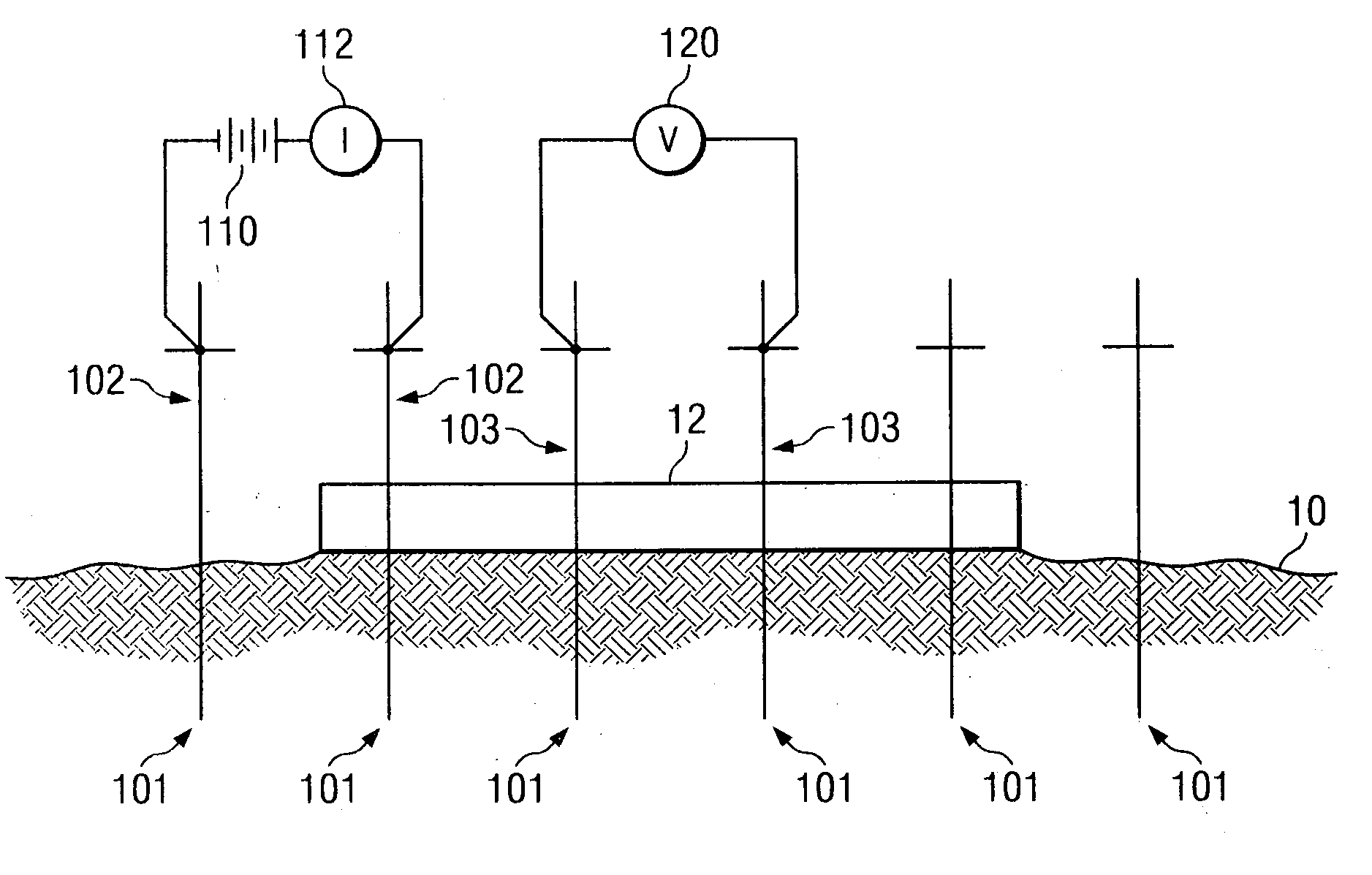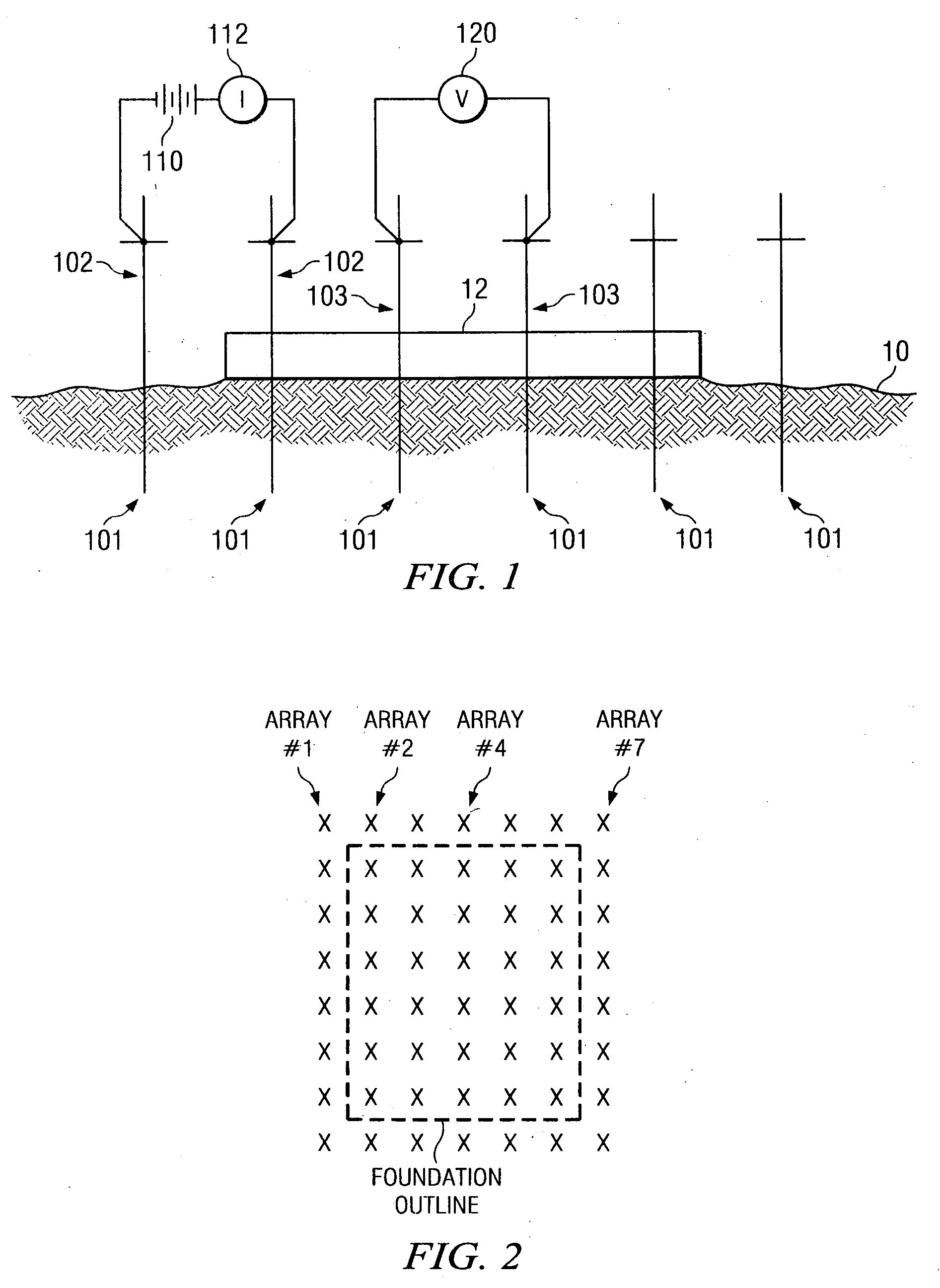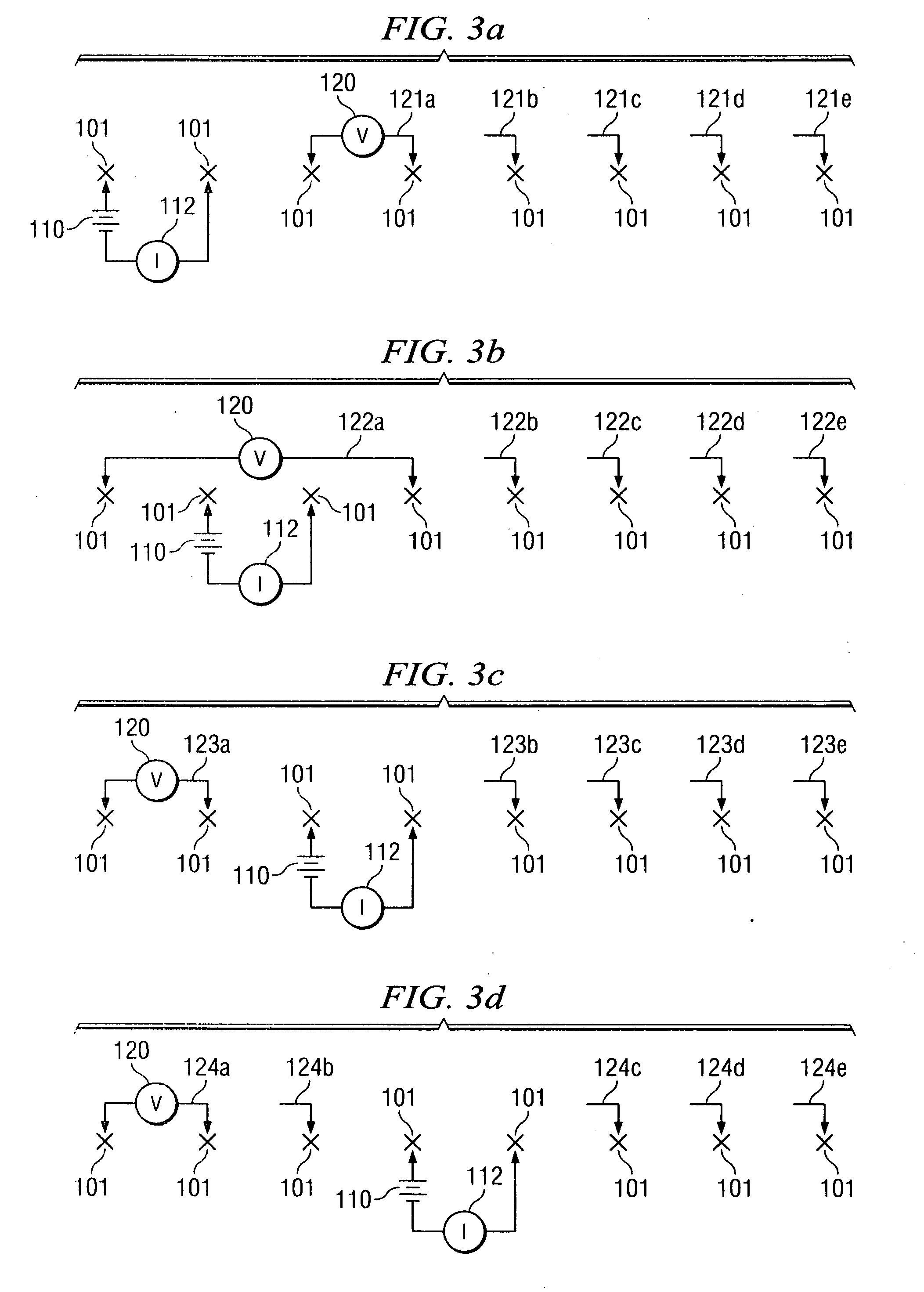Remotely reconfigurable system for mapping subsurface geological anomalies
a remote reconfigurable system and geological anomaly technology, applied in seismology, reradiation, instruments, etc., can solve the problems of inability to accurately return from subjacent soil, difficult and destructive tasks for detecting and locating fluid leakage beneath slab-on-grade foundations, and inability to accurately locate fluid leakage, etc., to achieve the effect of increasing the accuracy of sensors, avoiding excessive downtime and expensive field repairs
- Summary
- Abstract
- Description
- Claims
- Application Information
AI Technical Summary
Benefits of technology
Problems solved by technology
Method used
Image
Examples
first embodiment
[0085]The way in which addresses are determined for each voltage control unit is dependent on the embodiment chosen of the current invention. In a first embodiment, known as the “thumbwheel” method shown in FIG. 8, thumbwheels 634 are used to set an address number between 000 and 999 manually on each voltage control unit. In this case, the master controller is supplied internally with a table that maps known addresses between 000 and 999 to physical locations of electrodes in the array.
[0086]In a similar method, known as the “IR (infrared)” method, IR port 636 on the voltage control units are used to communicate and address to controller 604 via communication card 602. The IR port receives the address via a handheld PDA programmed to uniquely assign addresses to the voltage control units, according to a table. The identical table is used by the master controller to mathematically correlate the data received from each voltage control unit with its physical location. In an alternate e...
second embodiment
[0087]In a second embodiment, known as the “first-to-wake” method, the order of deployment of the voltage control units is used to set the addresses of each. In this embodiment, the first voltage control unit to “wake up” or come on line is addressed by the master control unit who assigns an address to it. Since the addresses are assigned in a physical order, the master controller is aware of the spatial relationship of the voltage control units. In most applications the interstitial distance between the electrodes is the same, or nearly the same. In this embodiment, once the electrodes are deployed then the voltage control units are deployed, one per electrode. The voltage control units are deployed in order starting from a first proximal position and proceeding linearly along the line of deployment of the electrodes to the most distal electrode position. After each voltage control unit is attached to its electrode, it is activated through switch 1303. In this method, the voltage c...
third embodiment
[0088]In a third embodiment, known as the “GPS location method”, the voltage control units determine their longitude and latitude location provided by the GPS card as they are switched on. This longitude and latitude location is then uploaded to the master controller along with a unique address stored in the memory of each voltage control unit. The addresses are correlated with physical locations by the master controller and used to coordinate the functions of the voltage control units and measurements returned from them. Moving to step 1411, if necessary, the master control program uploads position data from each of the voltage control units.
[0089]Entering a loop at step 1413, the master controller calculates switch settings to determine a “switch mask”. A switch mask is then uploaded to each of the voltage control units at step 1415. Two examples of switch masks are shown at FIG. 15.
[0090]Referring then to FIG. 15 and FIG. 3, a switch mask for position 121a for each voltage contro...
PUM
 Login to View More
Login to View More Abstract
Description
Claims
Application Information
 Login to View More
Login to View More - R&D
- Intellectual Property
- Life Sciences
- Materials
- Tech Scout
- Unparalleled Data Quality
- Higher Quality Content
- 60% Fewer Hallucinations
Browse by: Latest US Patents, China's latest patents, Technical Efficacy Thesaurus, Application Domain, Technology Topic, Popular Technical Reports.
© 2025 PatSnap. All rights reserved.Legal|Privacy policy|Modern Slavery Act Transparency Statement|Sitemap|About US| Contact US: help@patsnap.com



